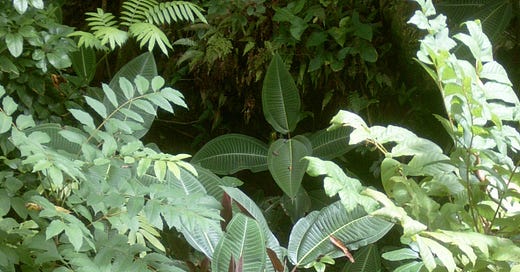Of all the islands I’ve visited, the big island of Hawai’i was the most familiar, while also being one of the strangest. At times, the plants and landforms made it seem as if I was in New Zealand. At other times, I was reminded that this island is a highly active volcano, entirely indifferent to human attempts to make a home there.
The correct name for Hawai’i’s largest island is Hawai’i, which caused me no end of confusion when I was trying to understand the islands. When I looked into the history, I found that the islands were ruled independently by the indigenous people until around 1800. But when Kamehameha the 1st united the islands, he called them the Kingdom of Hawai’i, since he came from the island of that name. So that is why the whole group ended up being known as Hawai’i. To avoid confusion, locals often simply refer to “the big island”.
Half of the big island’s area is the volcanic cone of Mauna Loa. From sea level, it rises a staggering 4000 metres, and there’s a lot more of it under the water, since the waters around Hawai’i are deep, mostly 5000-6000 metres. In comparison, most of the sea around New Zealand is less than 3000 metres deep, although there are trenches which are much deeper. The complex shape of the seafloor around New Zealand is the result of our position on the boundary of the Pacific and Australian plates. But the Hawai’ian islands are right in the middle of the Pacific Plate. The depth of the water around Hawai’i results from the weight of Mauna Loa pressing down on the plate.
The island of Hawai’i is made up of two volcanoes. Mauna Kea, to the north of Mauna Loa, is actually even taller, although only by 40 metres. However, its slopes are much steeper, so it’s less massive.
I stayed in two different locations on Hawai’i, the town of Hilo, which is the largest on the island, and Volcano, also known as Volcano Village. Hilo felt very different from my experience of the other islands. There probably were tourists, but it didn’t seem like a tourist town. I stayed at a motel often used by visiting researchers, and it was just a dozen or so rooms in a couple of blocks. It had ceiling fans rather than air conditioning and no pool or restaurant as you’d have in a big hotel. But it was clean and the staff were lovely. It also had one of the best breakfasts I’ve had travelling anywhere. There were cinnamon scrolls from a local bakery and fresh local lychees and papaya. And there was plenty of coffee.
As a child, I encountered canned lychees and thought that they were revolting. But when I tried fresh lychees as an adult, I was amazed. They are the most wonderfully fragrant fruit. When I raved to the staff about how delicious their lychees were – it was the first time I’d had them straight off the tree – they told me they were from their garden. Before I knew it, they’d picked a whole bagful for me to take with me. They gave me so many, I was eating them for days.
The island of Hawai’i packs an extraordinary range of landscapes into an island little larger than the Wellington region. It ranges from tropical lowlands – at sea level Hilo was hot and humid – to snow-capped peaks. This change in altitude affects more than the temperature, it affects rainfall as well. Parts of the eastern side of Hawai’i, facing the prevailing wind, receive as much rain as Fiordland, the wettest part of New Zealand. On the western side, in the rain shadow, it is much drier. Some areas receive less rainfall than Alice Springs in central Australia. Between the altitude and rainfall changes, it’s as if all the world’s climate zones are packed into one island.
I didn’t have time to see the whole island, but some of the local invasive species experts took me for a drive up the eastern side of the island to see some of their weed problems. As you’d expect from a tropical island with the rainfall of Fiordland, the land was thick with jungle-like growth. Much of it, though, was introduced or invasive.
Hawai’i has many spectacular invasive plants, but one in particular stands out. It’s a small rainforest tree from Central and South America. To those who value it as an ornamental, it’s often called velvet tree, as the leaves have a velvety appearance. To those who are trying to limit its invasion into the forests of the Pacific Islands, it’s sometimes known as the purple plague, although mostly it’s known as miconia, which comes from its scientific name.
Miconia first became a problem on Tahiti, where it was introduced in 1937. Until the 1970s, its spread went largely unnoticed, or at least unreported. It’s hard to imagine the plant not being noticed. By the 1990s, it was covering 70% of the island and was moving into the forest on its highest peaks. While much of Tahiti has a long history of human disturbance, the highest parts of the island contain largely undisturbed forest, filled with unique species. Areas with miconia, however, had very few native species.





